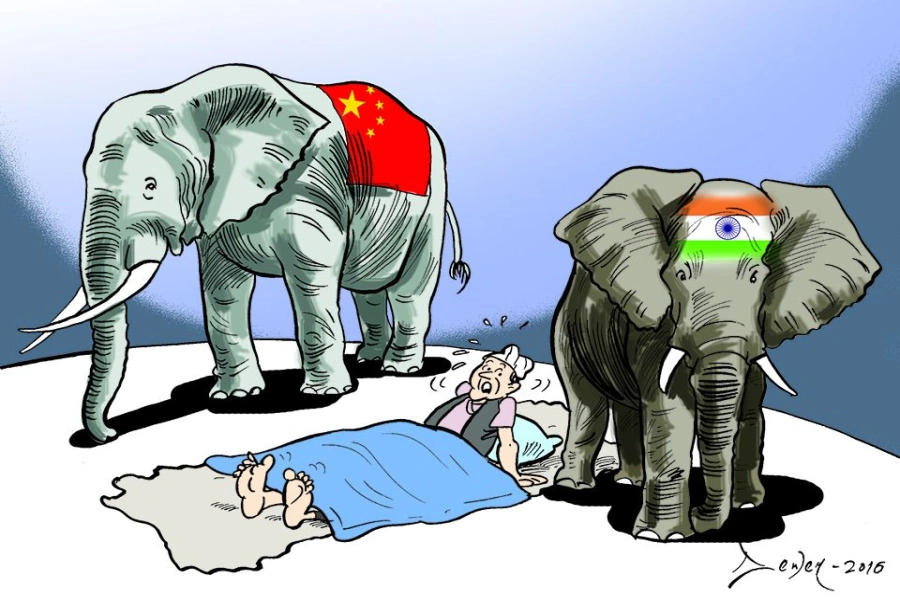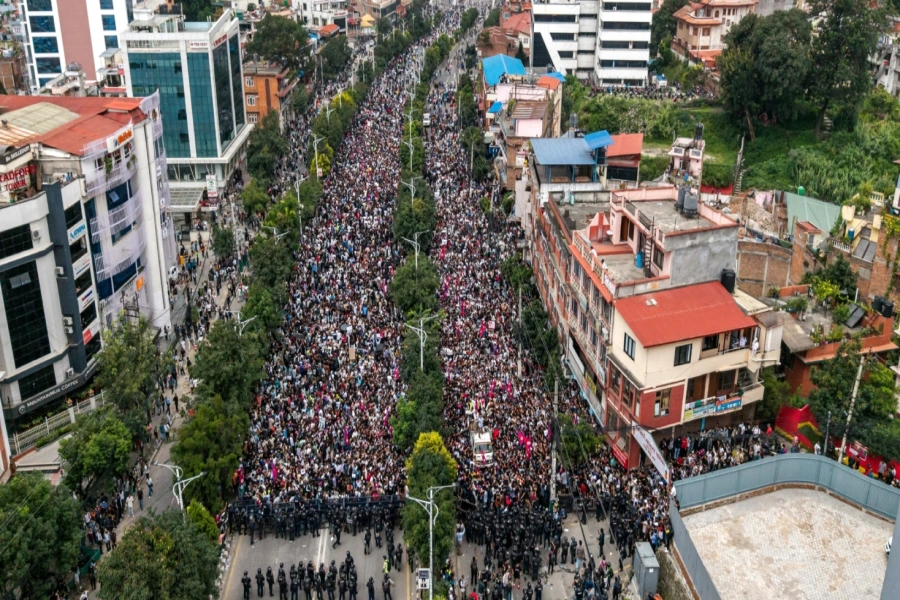The green economy is emerging as an important concept in the field of development. Though this is a relatively new concept, defined and interpreted in a different context, it has primarily been on the global agenda since the launch of a report titled “Towards a Green Economy- Pathways to Sustainable Development and Poverty Eradication” by the United Nations Environment Programme (UNEP) in early 2011. This report defines green economy as “one that results in improved human well-being and social equity, while significantly reducing environmental risks and ecological scarcities.”
The concept of ‘Green Economy and Inclusive Growth’ dominated the UN Rio +20 summit organised in June earlier this year in which the same UNEP report helped shape the discussion and outcome. After this agreement is reached at the international forum, it is likely to outline the future development discourse globally. This is also expected to change the policy position and development strategy around the world—especially in developing countries—which are likely to be pushed through conditional, financial and technical assistance.
But is this idea going to address the world poverty, increasing inequality and discrimination, depleting natural resources, changing climate, and many more complex problems? Many development thinkers agree that the term ‘green economy’ has been coined to replace the ‘sustainable development’ model, which completely failed to meet its deliverables—social development, economic development and environmental protection agreed in Rio de Janeiro in 1992. After twenty years of the concept being imbedded into the development strategy, we find the world worse off.

The notion of green economy may look simple and alluring and it may seem that all one needs to do is adopt an economic model that is less polluting and environmentally friendly. But the fundamental question remains unanswered—will it transform the present world to a more socially liveable, economically viable and environmentally sustainable world? The failed attempts of negotiating an international climate change treaty have proven that it is not so simple.
Should a poor developing country like Nepal that hardly pollutes or emits carbon agree to the concept?
Does it even have to change anything fundamentally or deviate from business as usual? What strategic shift does it need to grip on in order to green its economy—that is non-polluting, and with negligible carbon emission but still achieving economic welfare and sustainable development? Nepal can take some initiatives, at least, for its own development.
First and foremost, Nepal should do a rethink on the western development model that is strategically shaped and financed through various donors and multinational institutions. It is imperative to decouple the economic growth model that is particularly based on higher production and consumption behaviour without considering the limitation of resource availability. One needs to realize that the resources are finite within any given country and should be preserved for many generations to come.
Big is not always beautiful. The rationale behind mega projects, mega cities and mega infrastructure does not continuously lead to sustainable economic growth and save the environment at the same time. Everything needs to be contextualised given the ability of any country—finance, technology, human capacity, etc. And the conclusions can be drawn from the model western countries employed and are now struggling to save the world from massive pollution and carbon emission. They have learnt their lessons and are shifting away from their wealth accumulation and consumption-based economic model to a greener and more sustainable one.
From the macro perspective for Nepal, it needs to work on maintaining what it already has and make policy shifts to move away from the fault lines—for instance some of the sectors it particularly needs to look into are energy, forestry and agriculture, transportation, urbanization, trade and tourism.
Forest and agriculture are important sectors it should focus on. Nepal is already doing some noteworthy work through the community forestry program that supports local communities while contributing to the national economy.
Similarly, Nepal produces organic and local varieties of crops, vegetables and fruits. It needs to invest more in capacity building of farmers, research and technology on how to be best at this model. Substantial use of chemical fertilizer, insecticide and genetically modified crops has proven to be unsustainable. Wherever possible, encouraging local production, distribution and consumption should be the government’s focus
Energy production and distribution is another sector to consider. Investing in micro hydropower and generating an energy mix with solar and wind can help localise production and distribution systems to address energy poverty. In order to tackle the energy crisis, the Nepal government recently proposed an action plan which talks about installing a 40 MW thermal diesel power plant that guzzles imported diesel. This short vision and quick-fix plan is neither green nor long lasting.
If a country is seeking a reputation of being green, then the other sectors it will actually have to build through ambitious plans and policies are the transportation and urbanization sectors. Centralised and unplanned urbanization has always been a burden on ecological and sustainable development.
As a country that is just starting to entice foreign investment, it is crucial to be vigilant that they start ‘green’ rather than changing things later. Similarly, Nepal is already known for its natural beauty and environmental tourism. It should not deviate from this prominence and continue to promote and expand, but at the same time be cautious that it is not degrading the environment.
These are few broad sectors in point, but as envisioned by the Rio+20 document ‘The Future We Want’, it is important for Nepal to devise policies that help tackle poverty and inequality while taking care of the environment. Allowing a corporate take-over and capture of natural resources in the name of green economy will be the greatest blunder. We need to ensure that this is not a tool for amassing wealth by a few rich but addresses deprivation, social welfare, meeting the basic needs and rights of the common people.
Nepal has the potential to maintain an image of a truly green country based on what form of governance, economic model and policies it embraces. After all, the concept of green economy is not about putting the country into wilderness or being primitive but about addressing the environmental, social and economic development in the best interest of its people. Now that an agreement on a new constitution is still on hold, this could be the right time for a fresh debate on the future we want for Nepal.
rajupc80@hotmail.com
‘Green hydrogen laws needed’





































